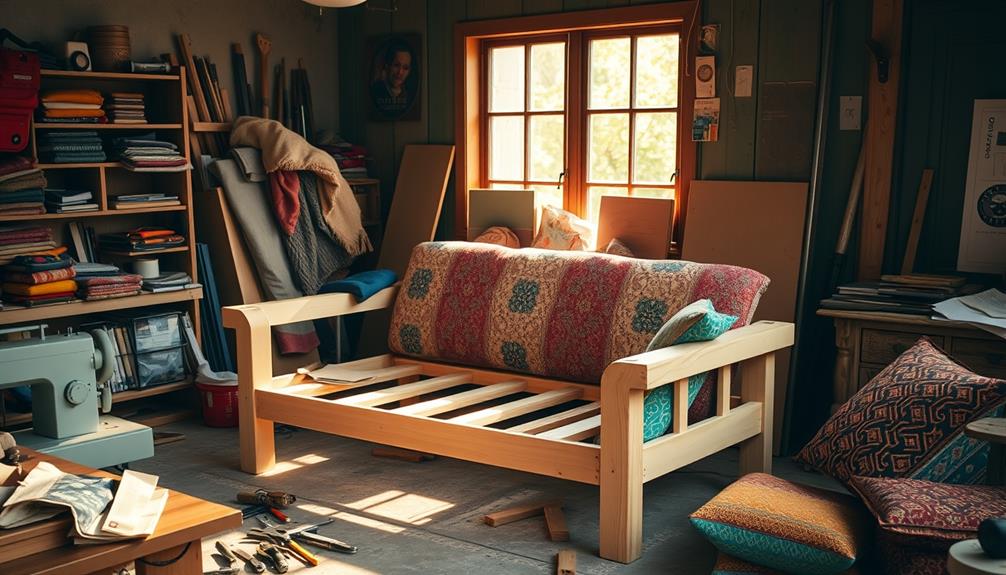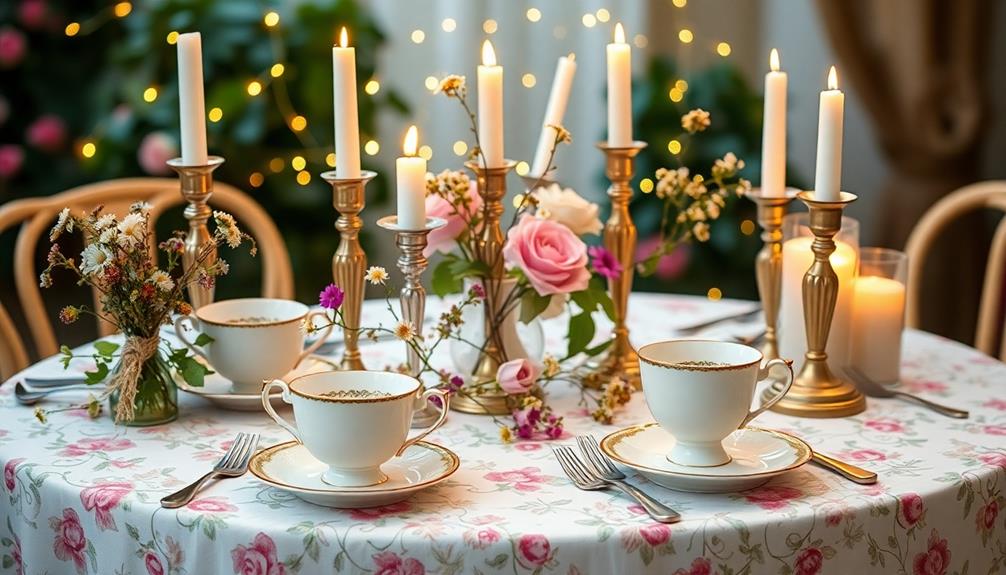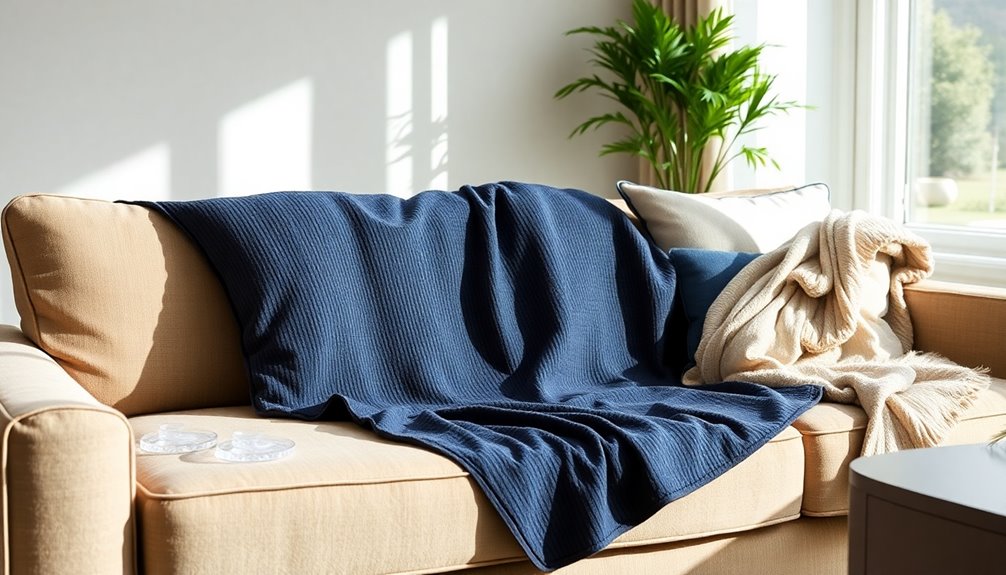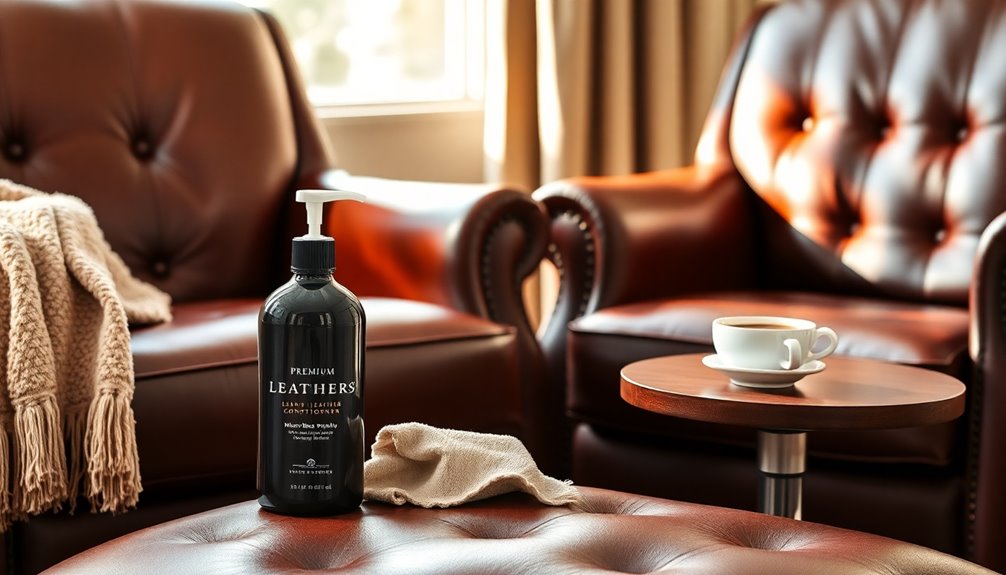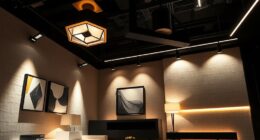You will find the timeless allure of 1950s houses in their unique combination of functionality and style. These houses emerged during the post-WWII housing boom, showcasing open floor plans and large windows that welcome natural light. Vibrant color schemes add warmth, while sleek lines and geometric shapes embody a minimalist aesthetic. Renowned designers like Richard Neutra and the Eameses crafted iconic spaces that continue to influence to this day. As present-day homeowners rejuvenating these gems, you can appreciate their nostalgic charm and how they seamlessly blend into modern living. There is so much more to learn about this lasting legacy and its influence on contemporary architecture.
Key Takeaways
- The 1950s homes feature open floor plans and large windows, creating bright and airy living spaces that enhance comfort and functionality.
- Bold color palettes with vibrant pastels and earthy tones add personality and warmth to interiors, making them inviting and stylish.
- Iconic design elements like cantilevered roofs and geometric shapes showcase the innovative spirit of mid-century modern architecture.
- Influential architects like Eichler and Neutra blended modern aesthetics with nature, resulting in harmonious and timeless home designs.
- Renovations of 1950s homes retain original features while incorporating sustainable practices, appealing to modern homeowners seeking charm and efficiency.
Historical Context of 1950s Homes
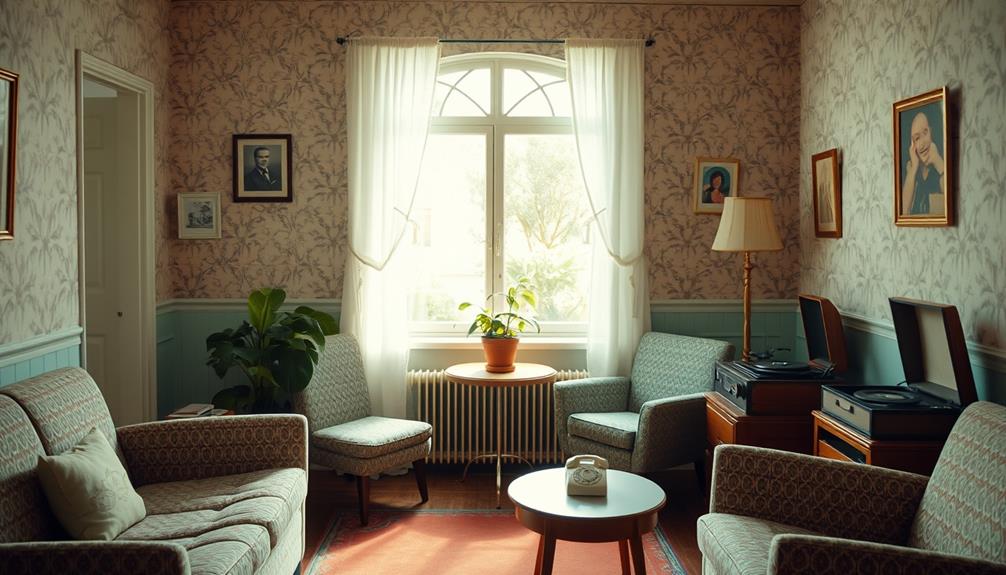
Emerging from the post-WWII housing boom, 1950s homes reflect a transformative era in American architecture.
You'll notice that these homes arose from a growing demand for affordable living spaces, as many families sought stability after the war. Mid-century modern design became popular during this time, breaking away from traditional styles and embracing functionality and simplicity.
Influenced by European architecture, especially Bauhaus, these homes prioritized open floor plans, allowing for a seamless flow between spaces. This design approach also emphasized a connection with nature, incorporating large windows and outdoor elements.
As you explore 1950s homes, you'll find that their innovative designs laid the groundwork for contemporary architecture, making them both timeless and influential.
Key Design Features
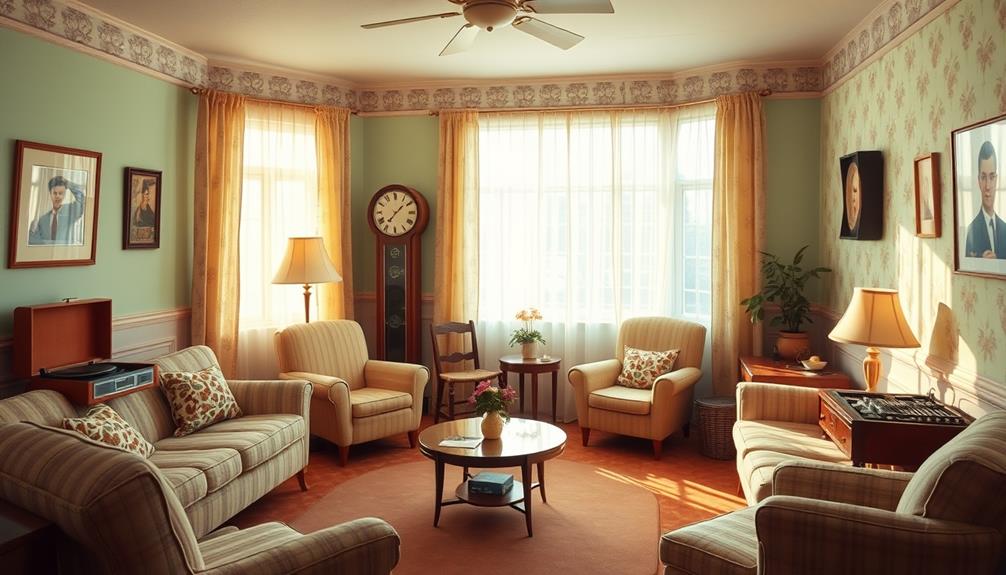
The design features of 1950s homes exemplify the era's innovative spirit and commitment to functionality.
You'll notice flat planes and large windows that flood interiors with natural light, creating an open and airy atmosphere. Organic materials like wood and stone add warmth, while sliding doors seamlessly connect indoor and outdoor spaces.
The minimalist aesthetic emphasizes clean lines and geometric shapes, making each room feel both stylish and efficient. Iconic design elements, such as cantilevered roofs and asymmetrical layouts, showcase the creativity of the time.
These features not only reflect the architectural trends of the 1950s but also enhance your living experience, blending comfort with a modern flair.
You'll appreciate how these design choices remain relevant today.
Color and Material Trends

Infusing homes with vibrant personality, the color and material trends of the 1950s embraced a bold palette that included pastels and earth tones.
You'll find that this era celebrated a mix of innovative materials and textures, creating inviting and stylish spaces.
Consider incorporating these elements into your own home:
- Bright pastels like mint green and soft pink accent walls.
- Earthy tones such as terracotta and olive for warmth.
- Plywood, fiberglass, and aluminum for modern furnishings.
- Textured accents with brick, stone, and patterned wallpapers.
These choices not only reflect the era's charm but also offer a unique way to express your personal style while honoring the delightful aesthetics of the 1950s.
Embrace this timeless appeal in your space!
Influential Architects and Designers

While exploring the enchanting world of 1950s architecture, you can't overlook the influential architects and designers who shaped this era.
Visionaries like Richard Neutra seamlessly blended structures with nature, creating homes that felt alive. Charles and Ray Eames revolutionized modern furniture, emphasizing both form and function.
Frank Lloyd Wright's organic architecture principles inspired countless designs, focusing on harmony with the environment. Joseph Eichler made modern homes accessible, developing affordable yet stylish residences that embraced the mid-century aesthetic.
Alvar Aalto introduced Scandinavian elements, enhancing American homes with simplicity and warmth.
These architects and designers not only defined a decade but also set the groundwork for future trends in architecture and design, leaving a lasting impact on how we perceive living spaces today.
Enduring Legacy and Modern Adaptations

1950s homes continue to captivate modern homeowners and designers alike, embodying a timeless charm that seamlessly blends nostalgia with contemporary living. Incorporating 1950s design elements, such as mid-century modern furniture and sleek architectural lines, into a modern home can create a sense of vintage appeal while still feeling fresh and up-to-date. Many homeowners are drawn to the simplicity and functionality of 1950s homes, which often feature open floor plans and an emphasis on indoor-outdoor living. Additionally, the use of natural materials and clean, minimalist lines in 1950s homes has influenced modern German home decor, as designers look to capture the same timeless elegance and simplicity.
Their appeal lies in both their unique design elements and their adaptability. You'll find these homes frequently inspire:
- Modern renovations that maintain original features while enhancing functionality.
- Sustainable design practices emphasizing natural light and energy efficiency.
- DIY projects celebrating mid-century modern aesthetics, from furniture to decor.
- Increased property value, making authentic 1950s homes sought-after in real estate markets.
As you explore these homes, you'll appreciate how they've evolved while retaining their distinctive character, proving that the legacy of mid-century design is far from over.
Embrace the charm and incorporate these elements into your own living space!
Frequently Asked Questions
What Are Common Maintenance Issues in 1950S Homes?
Common maintenance issues in 1950s homes include outdated electrical systems, old plumbing, drafty windows, and deteriorating roofs. You'll want to inspect insulation, check for pests, and address any foundation or structural concerns promptly.
How Do I Identify Authentic 1950S Architectural Features?
To identify authentic 1950s architectural features, look for flat planes, large windows, and open floor plans. Notice clean lines, organic materials, and minimalist aesthetics. Observe vibrant colors and unique design elements that embody mid-century modern charm.
Are There Specific Neighborhoods Known for 1950S Homes?
Yes, specific neighborhoods, especially in suburbs, often showcase authentic 1950s homes. Look for areas developed during the post-WWII housing boom, where mid-century modern architecture is prevalent, reflecting that era's unique charm and design principles.
What Is the Average Cost of Renovating a 1950S Home?
Renovating a 1950s home typically costs between $100 to $200 per square foot, depending on the extent of updates. You'll want to budget for modern amenities while preserving unique mid-century features that define its charm.
How Can I Incorporate Modern Technology Into a 1950S Home?
You can incorporate modern technology into a 1950s home by adding smart lighting, energy-efficient appliances, and programmable thermostats. Upgrade wiring for high-speed internet and install security systems to enhance both convenience and safety.
Conclusion
As you step back into the allure of 1950s homes, imagine a canvas painted with vibrant colors and sleek lines, inviting you to experience the harmony of nature and design. These timeless beauties aren't just relics; they're living reminders of innovation and simplicity. Whether you're drawn to their iconic features or the stories they tell, embracing mid-century modern style can transform your space into a serene retreat that echoes the charm of a bygone era.


